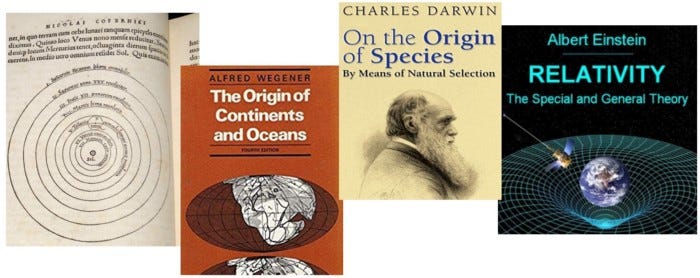What is Agile?
Agile is a concept we all continuously talk about, but what is it really?
Considering how popular Agile is, it is quite surprising how difficult it is to find information regarding what Agile actually is. Search for it on the internet and you will find lots of articles explaining why you should use Agile and how to use Agile, but little actually explaining what it is.
This leads to a lot of confusion as people end up forming their own interpretation of what Agile is, usually based on the problem they are trying to solve. Having trouble managing your work? Agile is the solution, it will optimise your workflow! Losing your competitive edge? Agile will increase your efficiency! Can’t keep up with a changing world? Agile will make you flexible!
To try to find out what Agile is, I would think that the best place to start would naturally be the Agile Manifesto.

However, the Agile Manifesto says a lot about how to do Agile and why we need Agile, but again, no clear explanation of what it is. In fact, I have often noticed that the Agile Manifesto makes little sense to people that are new to Agile. I get the feeling that they usually see it as no more than a bunch of marketing slogans.
If you think about it, that is not so strange. First of all, the Agile Manifesto is vague. Surely for something as important as the future of an organisation you should be able to expect a straight answer? So what is all that ‘something’ over ‘something’? Grey areas? And what are those ‘somethings’ anyway? They look more like good intentions or results to aim for than any kind of usable tool. They definitely sound great, but they don’t seem to have any practical value. They are surely only meant to soothe the hard bits to come? Isn’t that the way sales pitches usually work? Awe and inspire so that the last bit with the price seems reasonable?
People listen politely and react with appropriate awe, but I think they are really just waiting for us to get to the real stuff: clear and proper solutions, preferably in the form of processes and stuff that can be measured, and accounted for. Something concrete they can wrap their minds around and get on with implementing. Like the Scrum Guide! Or SAFe! These at least fulfil this instinctive need for concrete solutions.
The need for concrete solutions
Back in the late 19th century, a guy called Frederick Winslow Taylor focused on the importance of analysing workflows to make work more efficient. His approach showed us a new way to organise work using the power of analysis, processes and empiricism. It basically involves treating an organisation as a complex machine which we can design in detail and over which we have full control. The machine is designed by a small elite: management. The workforce are simply cogs in the machine.
Taylor’s ideas were quite successful, and they have given rise to a body of thought that reaches into the modern age. In this article, I refer to this body of knowledge as “the established way of thinking”. This established way of thinking has been extremely successful, helping us to achieve things like assembly lines, factories, mass production and eventually robotics, computers and even a man on the moon! In fact, it is an approach that has become so ingrained in our way of thinking that it seems to have become part of our unconscious. It has made us control-minded, and whenever we run into a problem we immediately look for processes to fix it.
However, this mindset is a problem when approaching the Agile Manifesto. We instinctively look for something in it that fits the established way of thinking and therefore miss the point, ending up with a confused idea of Agile.
A paradigm shift
I think that this is the first thing we need to realise about Agile: Agile is a completely new way of thinking. It is a paradigm shift, a fundamentally new way of looking at things.
And just like any other paradigm shift, you cannot use the established way of thinking to understand it. It would be like trying to use Newtonian physics, with its vision of the clockwork universe, to explain time dilation as visualised by Einstein. Or creationism, with its vision of godly perfection, to explain how humans and chimpanzees share a common ancestor.

To be able to understand Agile, you have to restrain your instinctive control-minded and process-driven way of looking at things. You have to look very closely at those “marketing slogans” in the Agile Manifesto and, as hard as it may seem, you have to learn to understand them. You have to learn how to use them to think in this new way. Until you do, the Agile Manifesto will remain vague.
So what is this new way of thinking precisely?
Going back to the Agile Manifesto and looking at it more closely I notice three salient facts that help make it clearer:
it deals with how to find balance in a complex, ambiguous world, a world where things are no longer clear-cut, hence the ‘something’ over ‘something’ approach,
it has to do with people and the way they cooperate, the human factor, embracing the fact that people are complex and unpredictable, hence the focus on results over control,
it deals with giving people purpose and control over their work so that they can best operate in an unclear world, hence the focus on goals, to give direction while leaving the how to the people themselves.
I think that this is the second thing to realise about Agile, Agile is about people, and more specifically, about encouraging people to develop in such a way that they can take control and deal with the challenges in their work themselves.
Surprise, Agile is about people
This may come as a surprise to many people. Just about any definition of Agile starts with “An iterative empiric approach to…”. But that is precisely my point: these are definitions of Agile that are based on the how. Empiricism, teams, user stories, iterations; these are all examples of tools that we use in Agile, but they are not its purpose. Agile is about empowering people to take control of their environment and about giving them complete freedom to discover how to use available tools in the most effective way.
And this applies to the why too. People adopt Agile to increase efficiency, transparency, velocity, predictability, quality. But again all these are a result of Agile, not its goal. It is the mindset that makes it all possible. That is why it is “People and interactions above processes and tools”.
To illustrate this, think about empiricism itself. Try introducing empiricism into an organisation mired in a culture of fear and control, and it doesn’t work, no matter what you do. You can’t force empiricism. People are too busy evading blame and manipulating information.
Think about it, how often do people complain that their retrospectives don’t deliver anything? Retrospectives where people just complain and nothing changes? If the process were the solution, shouldn’t just having the retrospective be enough to fix the problem? Change is only possible after the mindset itself changes. I see this again and again as a Scrum Master: Scrum only works after the team has developed the right mindset.
Looking at it from a different perspective, I find startups are a great example of truly Agile companies. Often, they have no clear processes and are quite unstructured. Instead, they seem to achieve high levels of Agility mainly due to a shared vision, total commitment and perfect motivation. The right mindset. Processes only take form later, as the organisation starts growing, and only according to the needs of the people involved. They are never a purpose in itself.
For better or worse, the world economy operates as a massive arms race for competitive advantage. In our time we are running into the limits of what we can achieve with the established way of thinking. Treating people as standardised cogs in the machine, which is so essential to keep things under control and simple enough to treat the organisation as a machine, is the limiting factor.
Agile is the next level in this arms race, a new way of working in which an organisation becomes a shared vision that turns the complete workforce into empowered partners, all sharing full responsibility and all focused on the goal of the organisation.
Think about the implications of this. They are immensely far-reaching. Instead of a small elite trying to keep up with everything going on inside and outside the organisation and trying to find the solutions for all possible problems, the complete workforce, from their own various expertises, address challenges proactively and close to real-time!
Agile is about a mindset
That is the fundamental difference that Agile brings. Where the established way of thinking is all about finding the best processes and tools, Agile goes a step further and focuses on empowering everyone in the organisation to find the best processes and tools together, continuously, as fast as the need arises. And that is the reason Agile focuses on people. Agile is about helping the workforce to grow into those empowered partners. Agile is about developing the right mindset. The growth mindset to be exact.

The growth mindset is the belief that intelligence is not fixed but can be developed, that learning is our greatest gift. It is the belief that we as human beings have an innate need for purpose and that work can become that purpose, reigning loose unexpected levels of motivation and innovation. And this is precisely what we need to empower people to take control of their work and participate in the design of the organisation.
Conclusion
Agile is a fundamentally new way of looking at things,
Agile is about empowering people,
Agile is about bringing about a growth mindset.

The challenge of Agile is that nobody can be told to do Agile. Nobody can be told to develop a growth mindset. It is much too complex. The Agile Manifesto, and other such principles, like the Scrum values, the elements of motivation, and the five learning disciplines, are all meant as simple rules to help us navigate this brave new world. A world of people, learning, soft skills, shared visions, empowerment, facilitation, coaching and all the rest.


